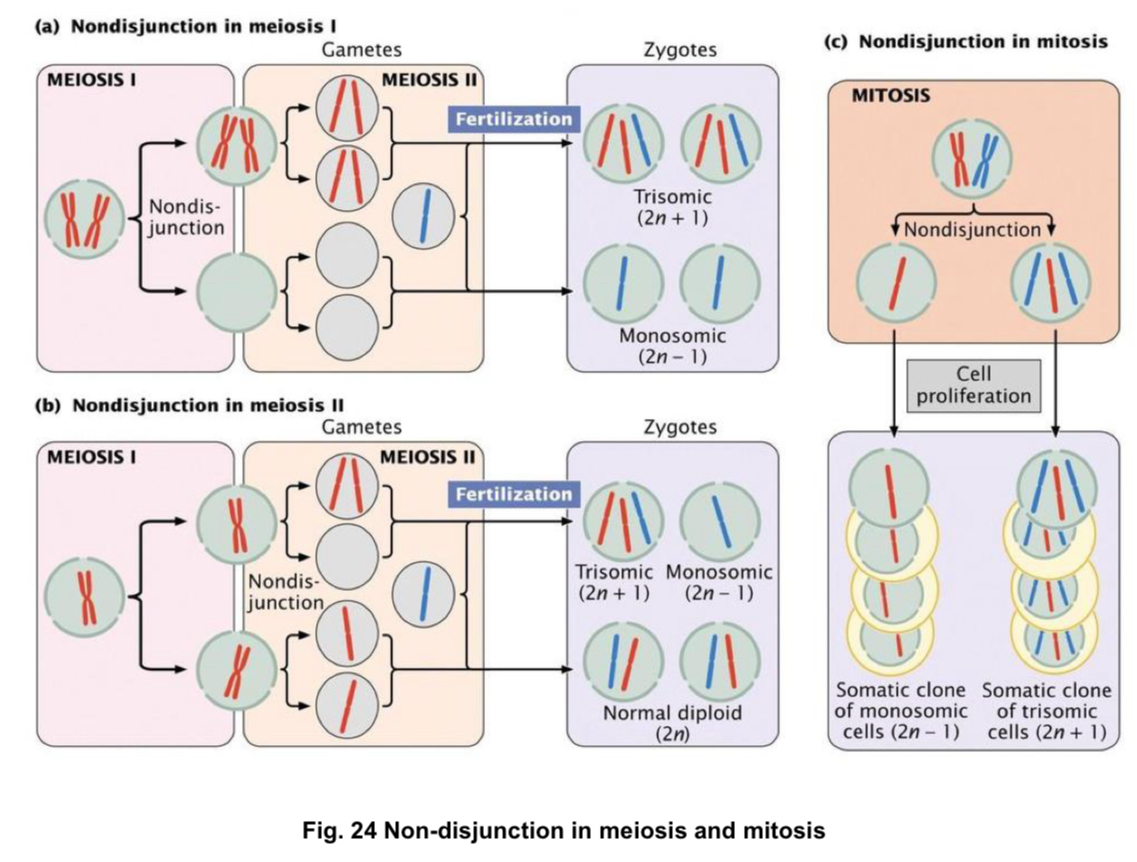MITOSIS, MEIOSIS, CHROMO ABERRATIONS
1/27
There's no tags or description
Looks like no tags are added yet.
Name | Mastery | Learn | Test | Matching | Spaced |
|---|
No study sessions yet.
28 Terms

cell cycle
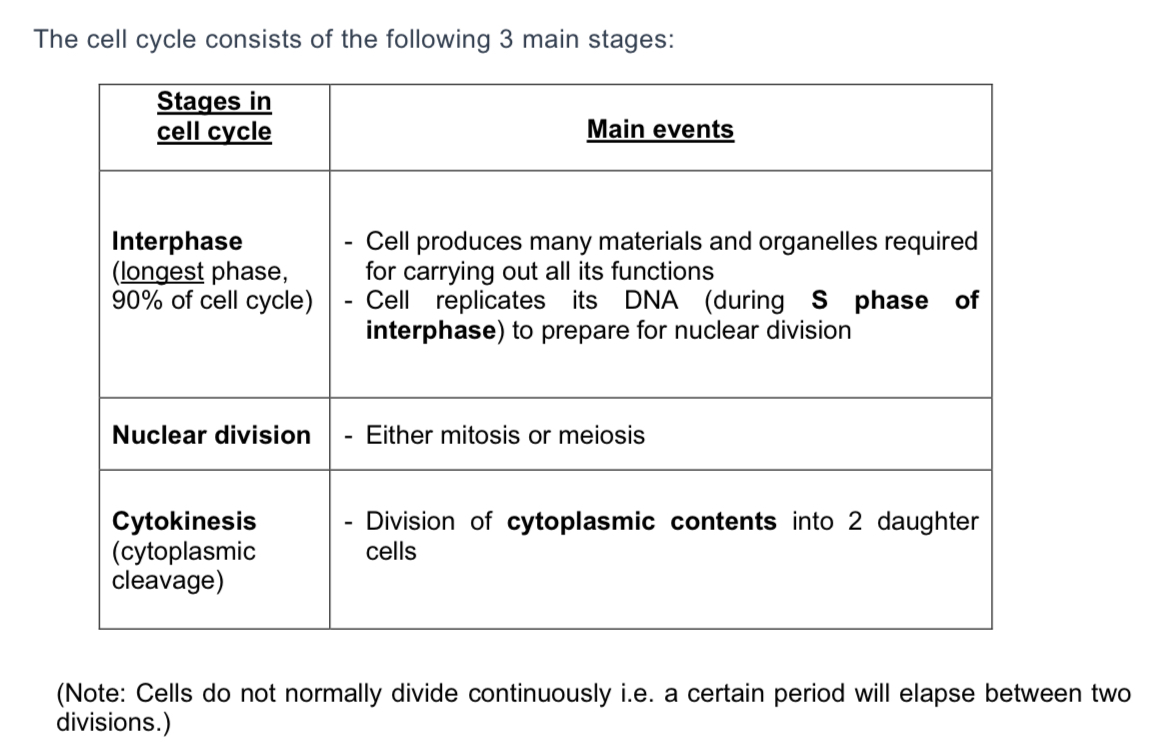
what occurs during interphase? (G1, s, G2 phases)
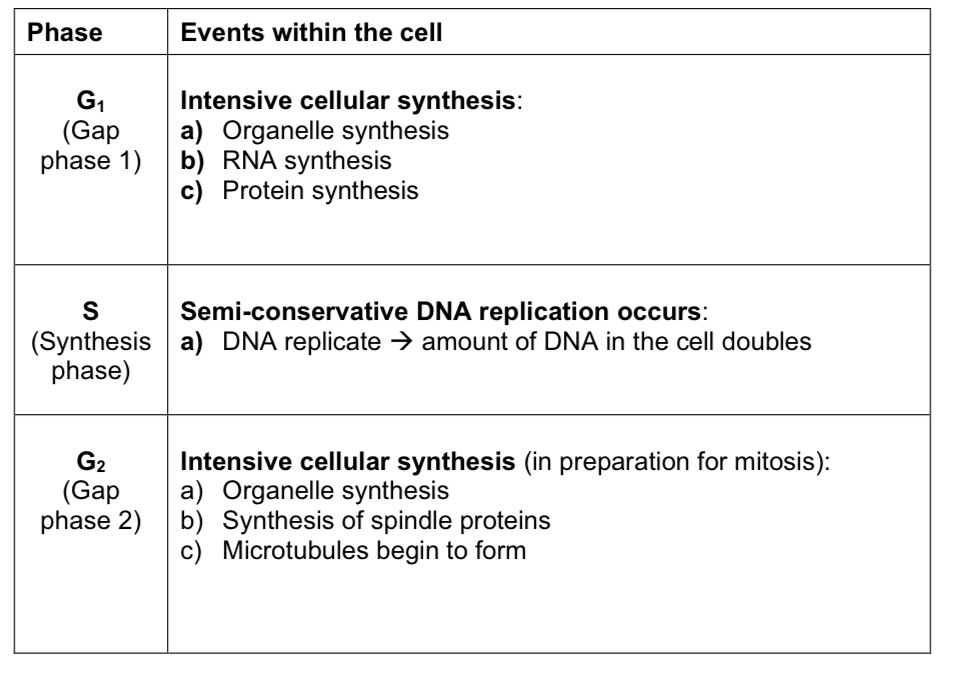
by the end of the interphase, how does the cell look like?
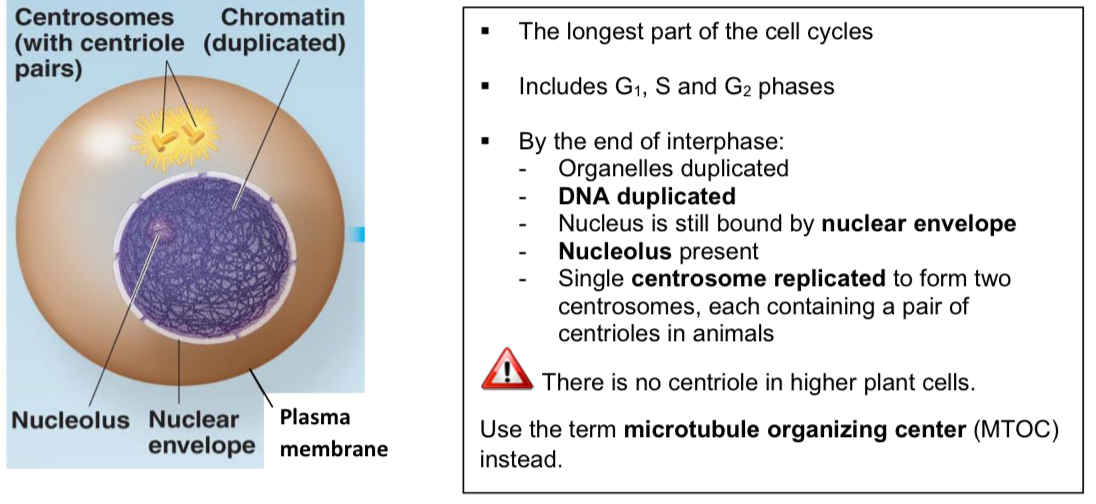
list the stages of cell division (mitosis).
1) interphase - G1, s, G2 phases
2) mitosis - prophase, metaphase, anaphase, telophase
3) cytokinesis
euchromatin vs heterochromatin vs chromosome vs chromatid
1) euchromatin → loosely coiled DNA in nucleus
2) heterochromatin → tightly coiled DNA in nucleus, shows dark regions when stained
3) chromosome → condensed chromatin
4) chromatid → 2 sister chromatids on 1 chromosome
note: each chromatid is 1 DNA molecule, 2 DNA strands. so 1 chromosome consists 2 DNA molecules, 4 DNA strands
haploid vs diploid
haploid → describes nucleus/cell/organism that contains 1 complete set of chromosomes. gametes are usually haploid
diploid → describes nucleus/cell/organism with 2 complete sets of chromosomes, where each chromosome in the pair comes from either parent. most eukaryotic organisms exist in diploid condition. somatic cells are diploid eg human liver cell, skin cell
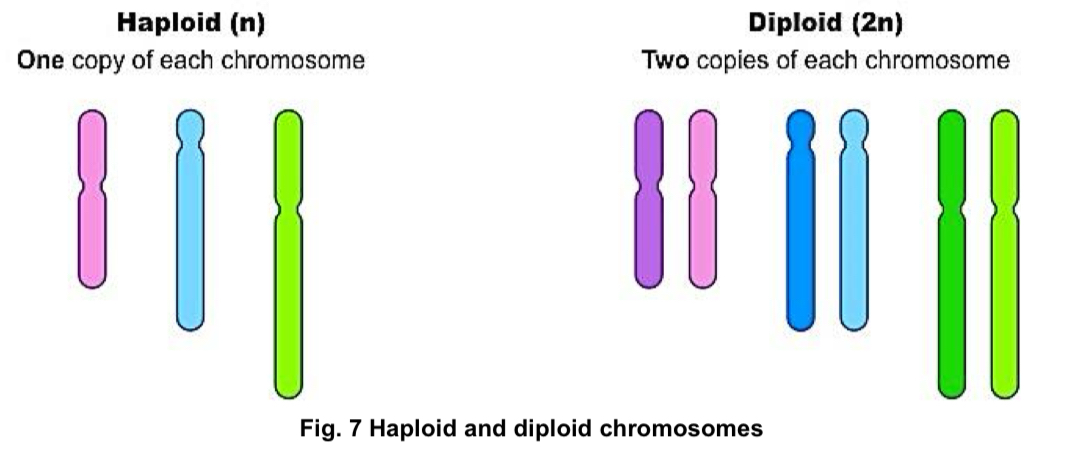
what is the diploid and haploid number for humans?
diploid → 46 chromo
haploid → 23 chromo
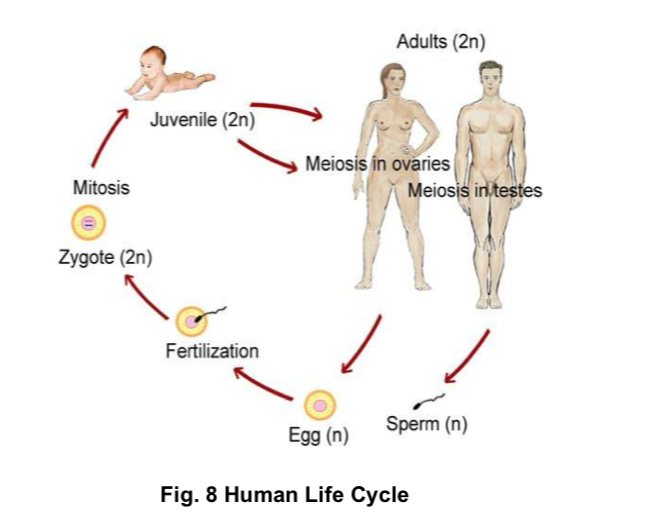
fusion of haploid sperm and haploid egg during fertilisation results in formation of diploid zygote. after fertilisation, zygote undergoes mitosis, generating genetically identical cells.
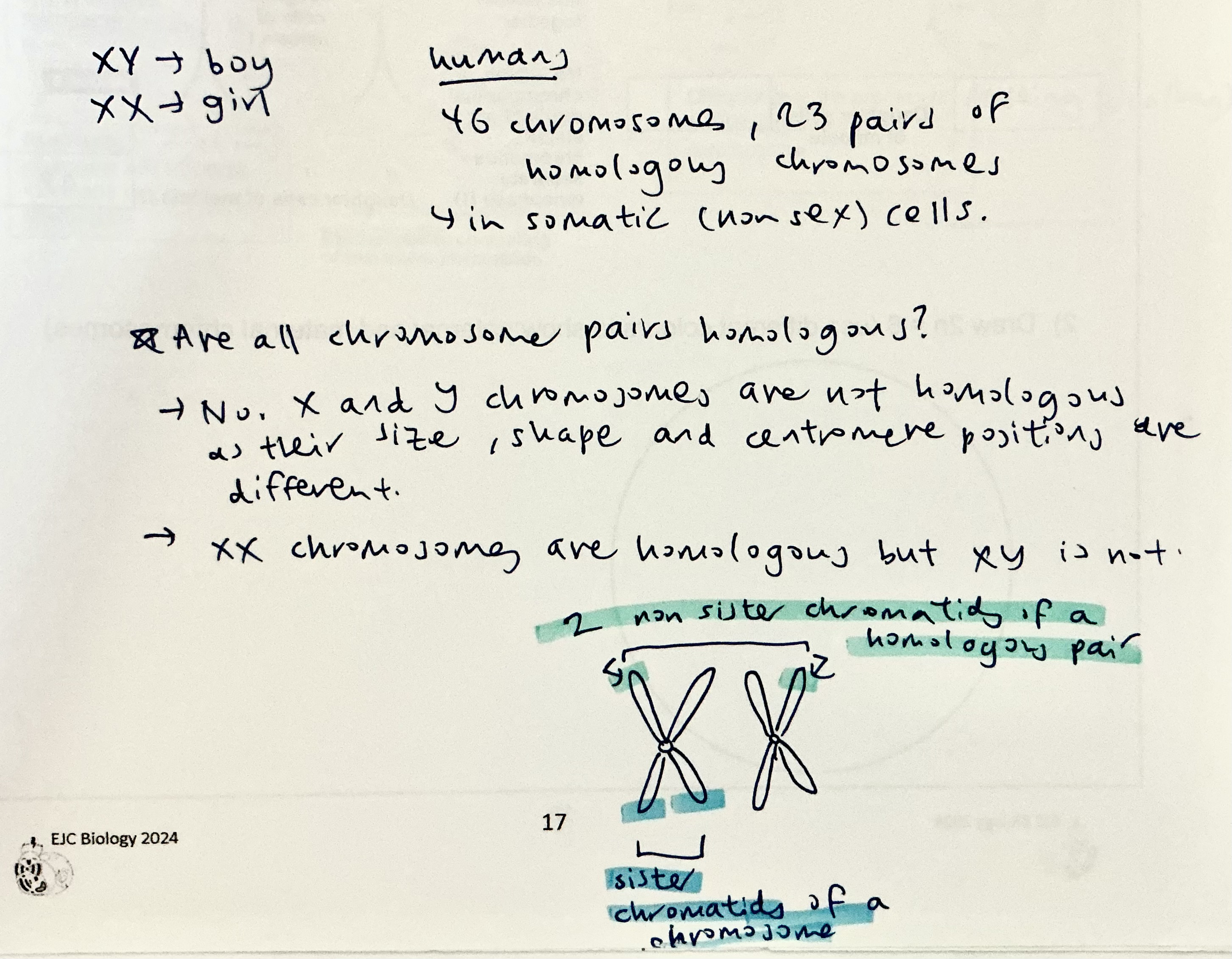
define homologous chromosomes. define allele.
→ homologous chromosomes are chromosomes having same size, shape, centromere position, staining pattern, and gene loci.
→ alleles are alternative forms of a gene and occupy the same loci on a pair of homologous chromosomes.
what happens in early and late prophase of mitosis?
note: kinetochore microtubules attach to the kinetochore proteins at the centromere of each chromosome
→ non-kinetochore microtubules are spindle fibres

what happens at metaphase and anaphase of mitosis?
note: at anaphase, no. of chromosomes in cell double due to division of centromere

what happens at telophase of mitosis?

no. of chromosomes, amount of DNA, no. DNA molecules during mitosis
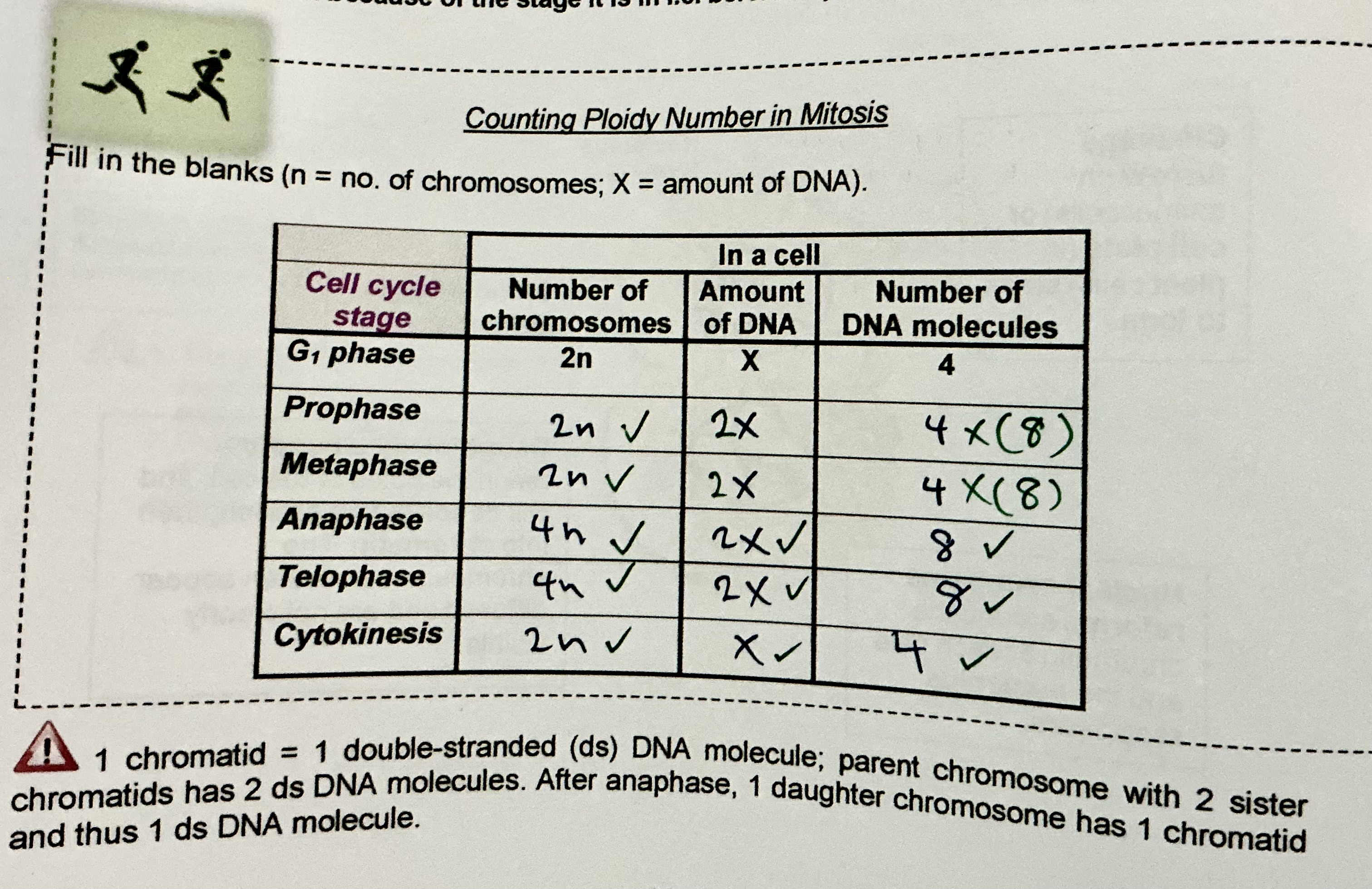
describe cytokinesis in cell division, for animal and plant cells.
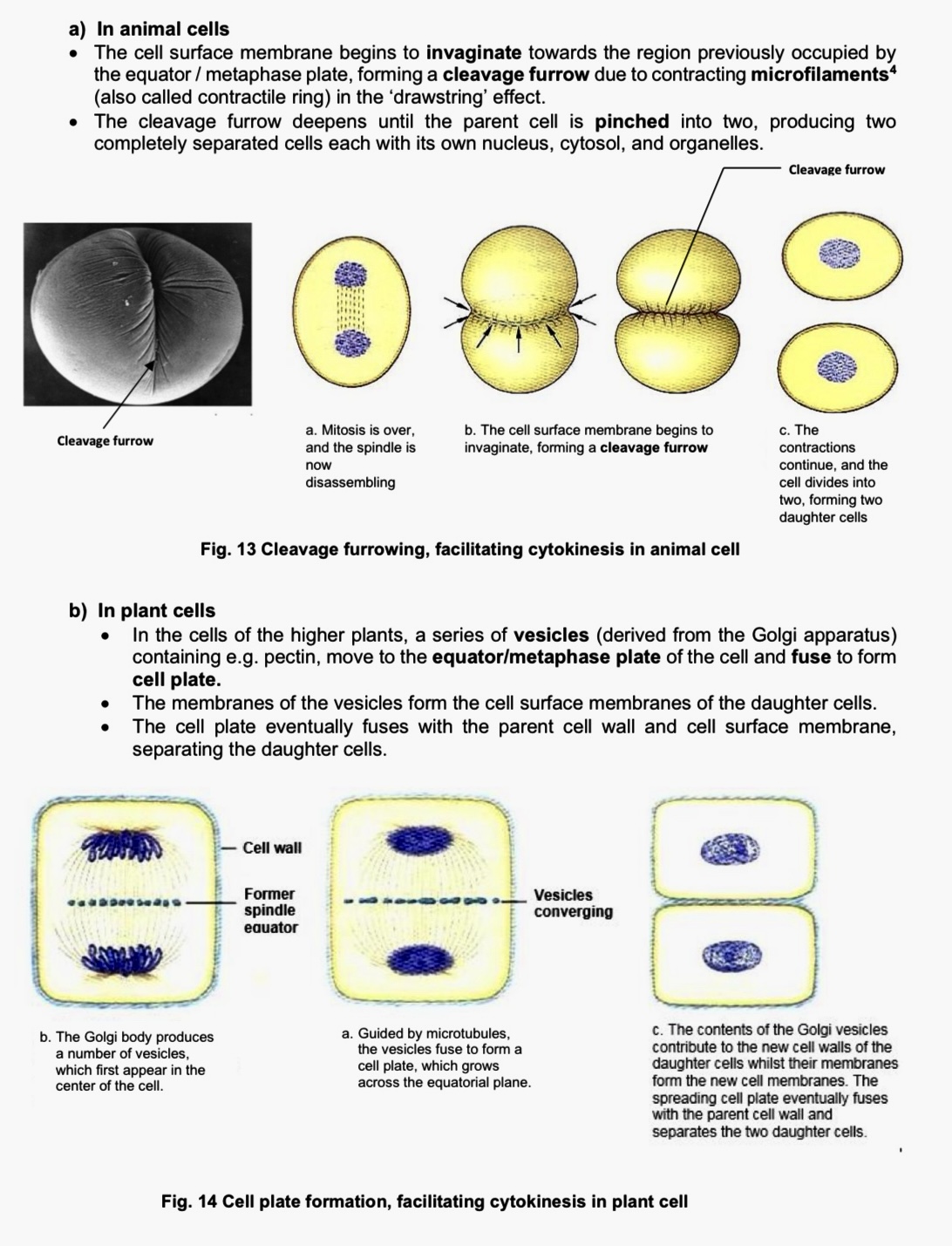
what are the features of the cell cycle that ensure production of genetically identical cells during mitosis?
1) semi-conservative DNA replication of the parent cell before mitosis begins → ensures that the hereditary information of the cell is copied to give an identical set before cell division
2) arrangement of chromosomes on the spindle during metaphase
→ all kinetochores must be attached to kinetochore microtubules
→ spindle pulls chromatids to opposite poles, ensuring even distribution of daughter chromosomes into daughter cells
→ daughter chromosomes that are separated to opposite poles have identical genes, as a result of DNA replication from same parental DNA
→ daughter cells produced will be genetically identical to each other
what is the significance of mitosis?
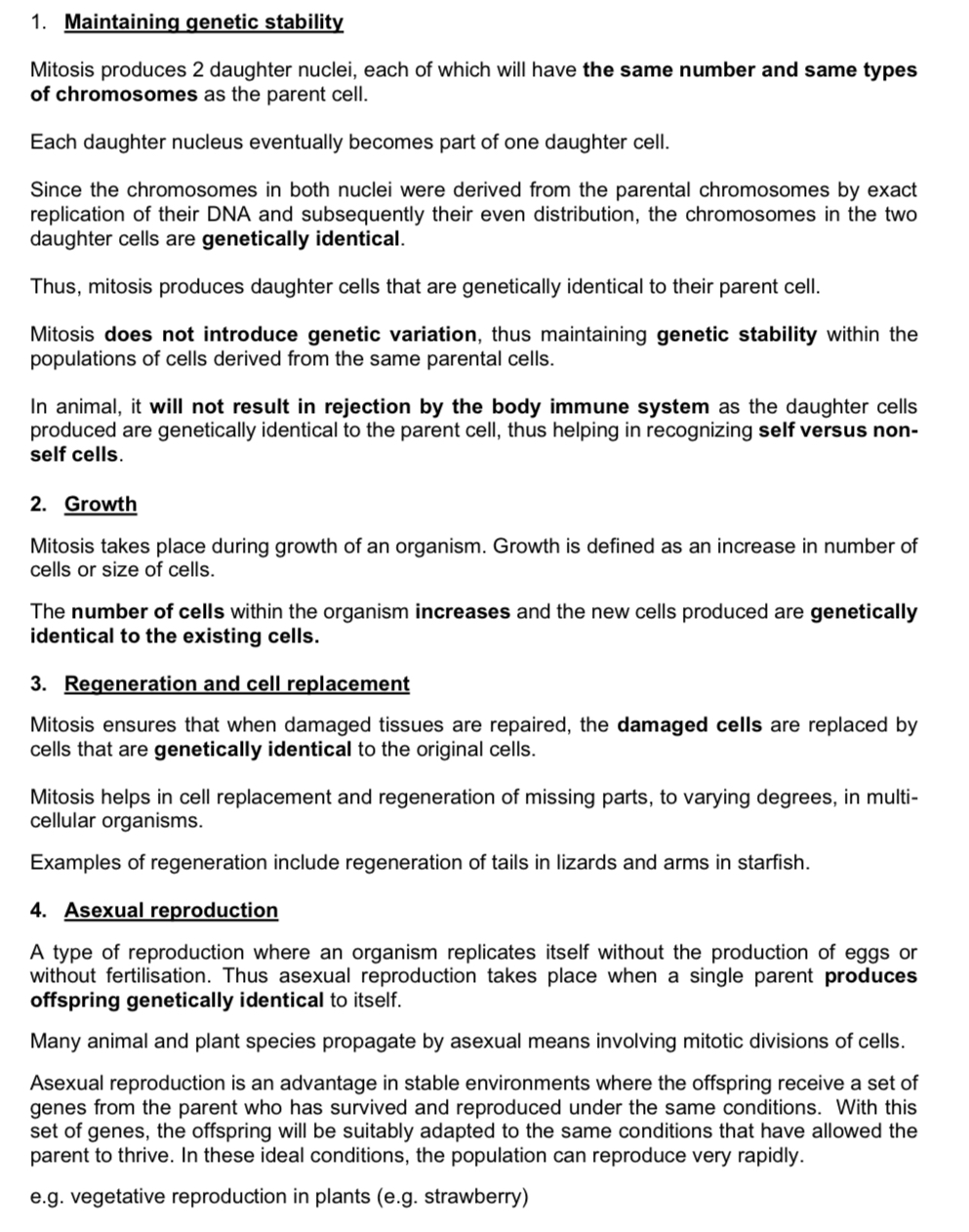
list the stages of cell division (meiosis).
1) interphase - G1, s, G2 phases
2) meiosis I - prophase I, metaphase I, anaphase I, telophase I
3) cytokinesis
4) interphase
5) meiosis II - prophase II, metaphase II, anaphase II, telophase II
6) cytokinesis
describe prophase I of meiosis.
note: spindles consist of non-kinetochore microtubules aka spindle fibres, and kinetochore microtubules which attach to kinetochore proteins on centromere of chromosome
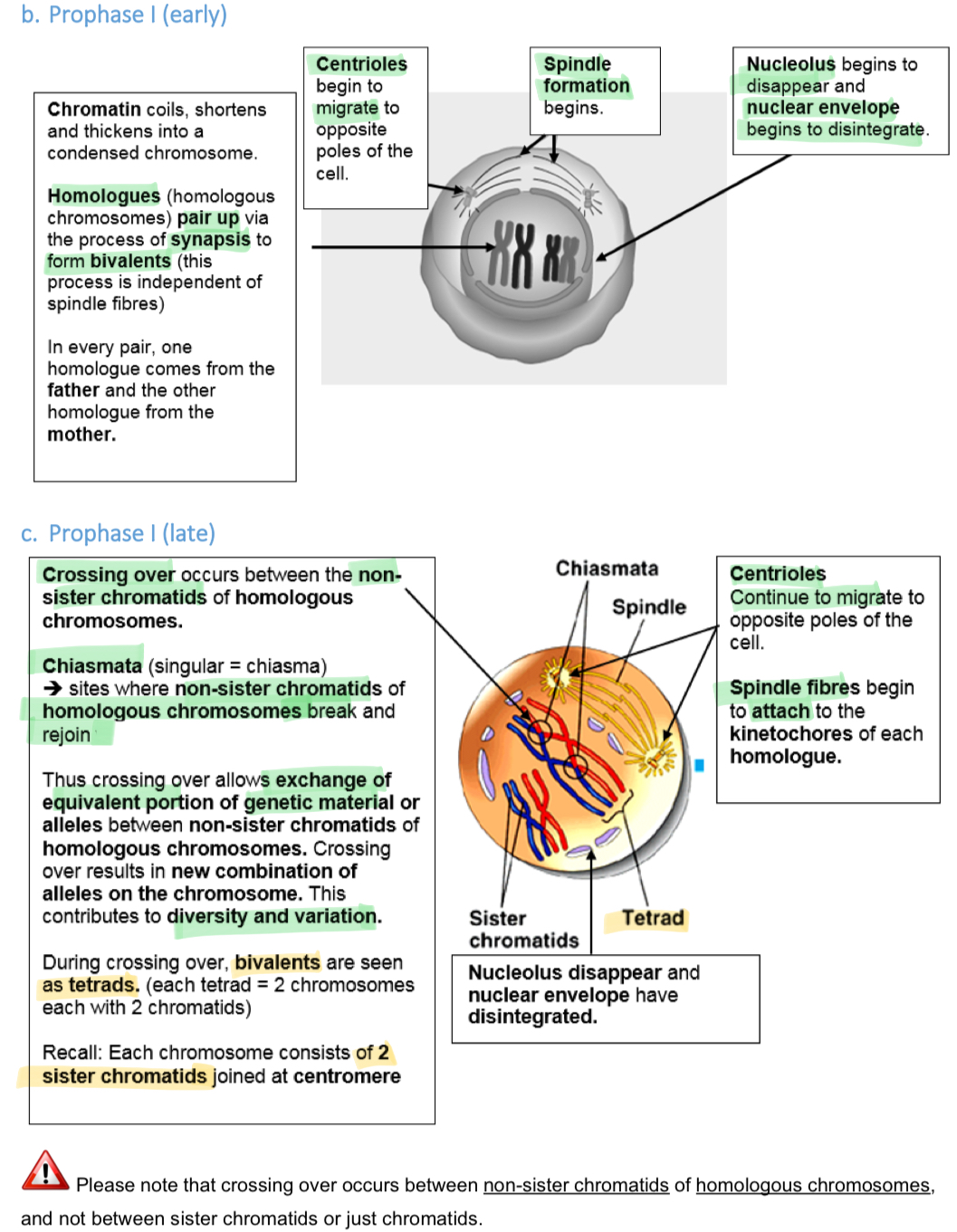
describe metaphase I and anaphase I of meiosis.
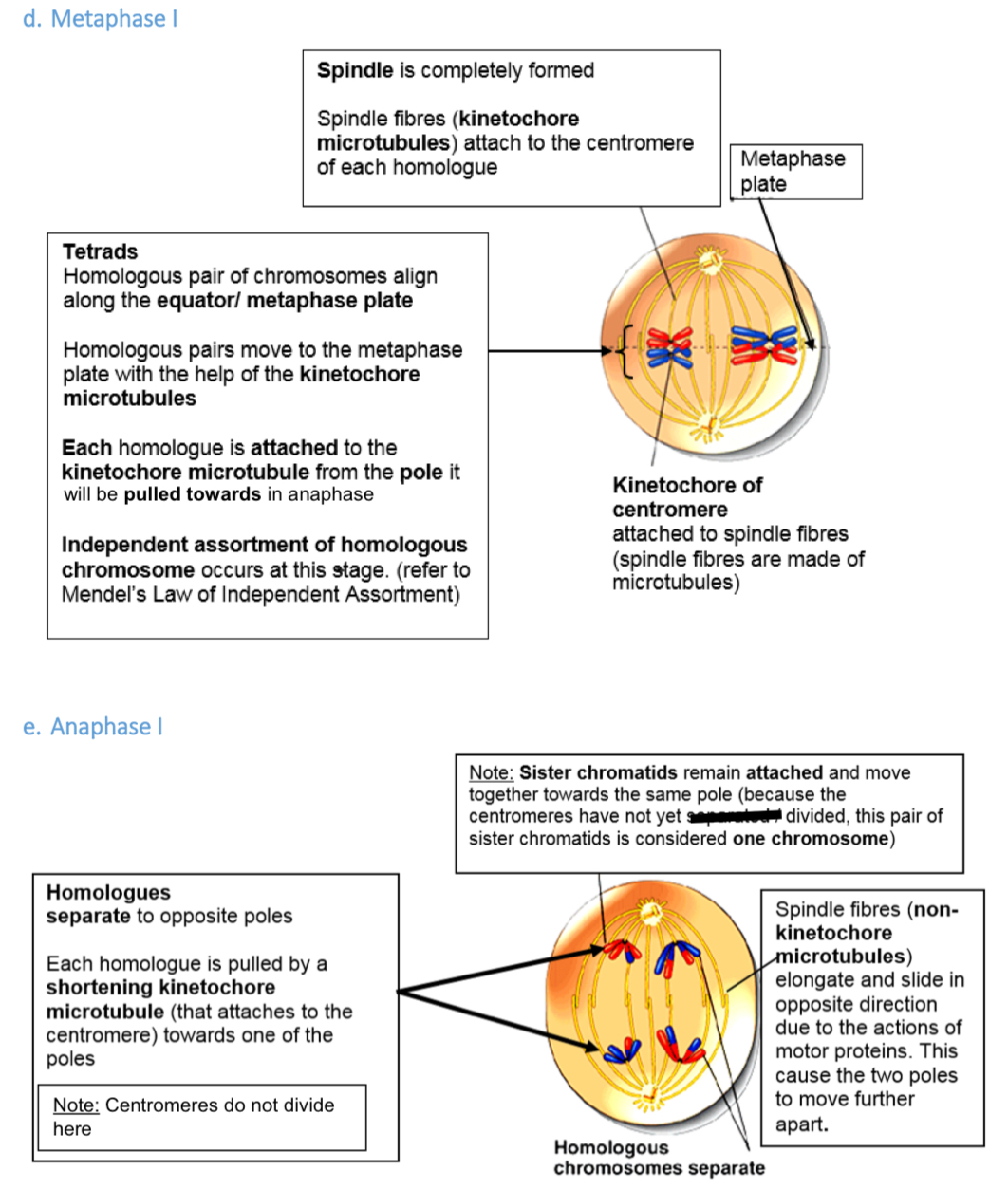
describe telophase I of meiosis.

describe meiosis II.

compare meiosis I and II.

describe significance of meiosis.
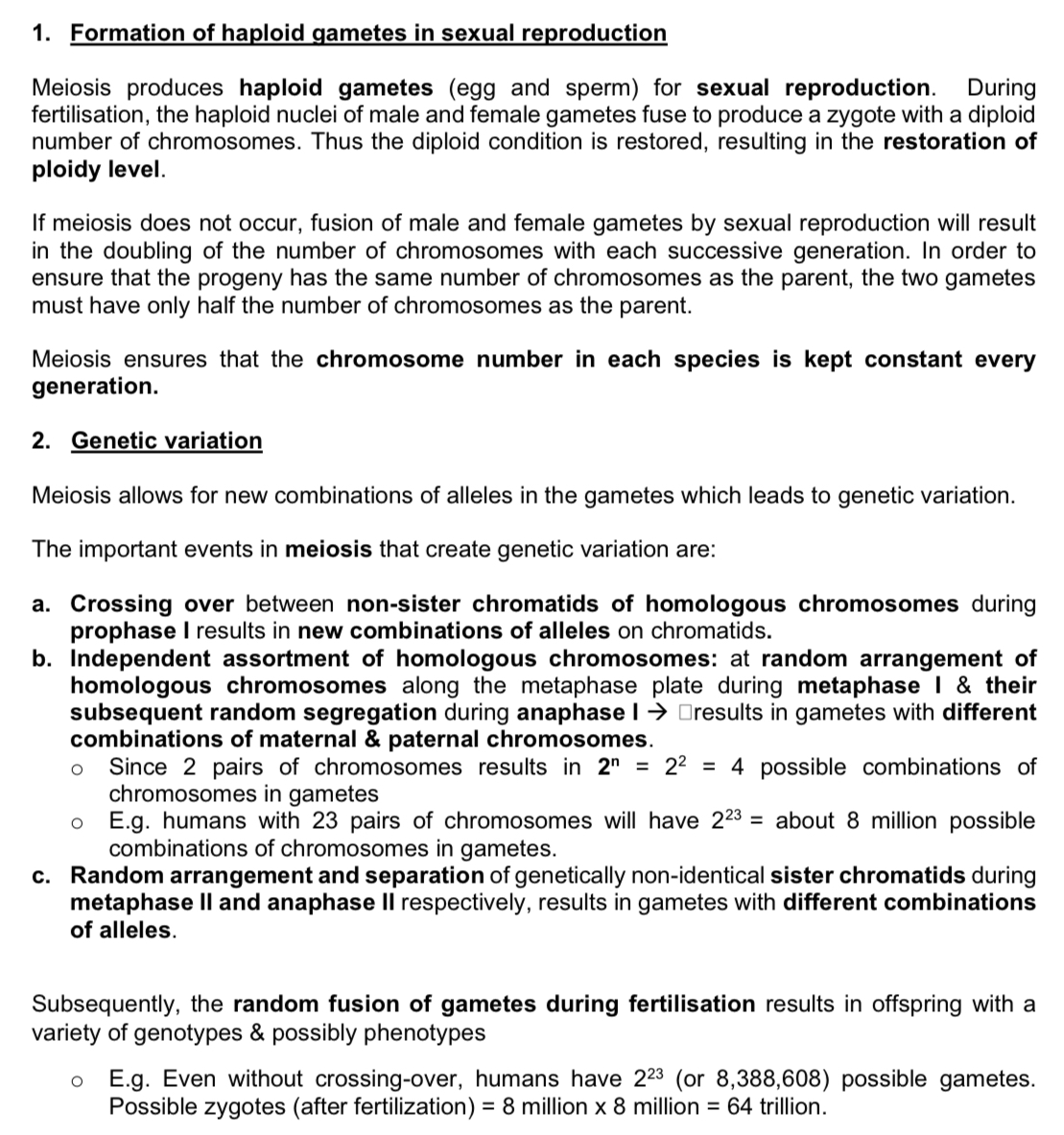
why is variation important?

compare mitosis and meiosis.
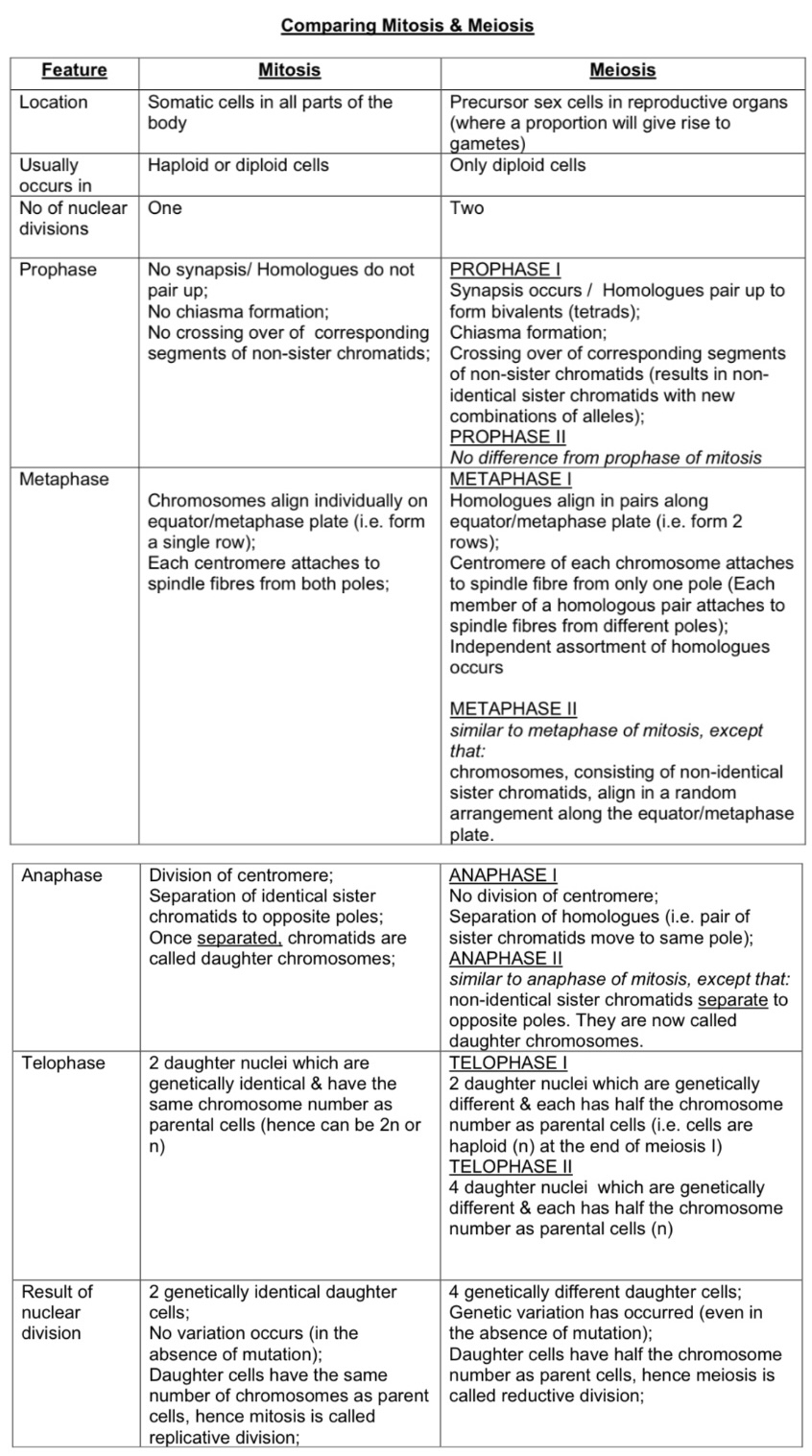
what are the 2 major forms of chromosomal aberrations?
1) variation in chromosomal structure
2) variation in chromosomal number
types of variation in chromosomal structure? describe significance of mutations in chromosomal structures. state some real-life examples of chromosomal structural mutations.
1) chromosomal deletions and duplications → occurs during crossing over. non-sister chromatids of homologous chromosomes may break and rejoin at incorrect place such that one chromosome may give up more genes than it receives.
2) chromosomal inversion and translocation → results in disease even though amount of chromosomal material remains the same. gene’s expression can be influenced by its new location among neighbouring genes. eg genes next to enhancers can increase rate of gene expression
sig → phenotypic abnormalities that result are usually due to reduced or additional genetic material. chromosome deletions can result in zygotes loss, stillbirths or infant deaths.
EG
1) deletion in chromosome 5 → Cri-du-chat. child born is physically and mentally retarded, usually die in infancy. results from chromosomal deletion that occurs as a random event during formation of gametes
2) most of chromo 22 translocated onto chromo 9, small distal ration of chromo 9 translocated to chromo 22 → Chronic Myelogenous Leukemia CML. brings 2 genes next to each other and genes are transcribed and translated as one protein, which causes increased cell proliferation and reduced apoptosis, leading to cancer. symptoms include fever, night sweats, enlarged spleen
3) duplication on chromosome 17 → Charcot-Marie-Tooth syndrome CMT. this results in high gene dosage of myelin sheath protein, resulting in abnormal structure and function of myelin sheath. inherited in autosomal dominant condition. symptoms include loss of balance, poor motor skills. however not fatal, patients have normal life expectancy
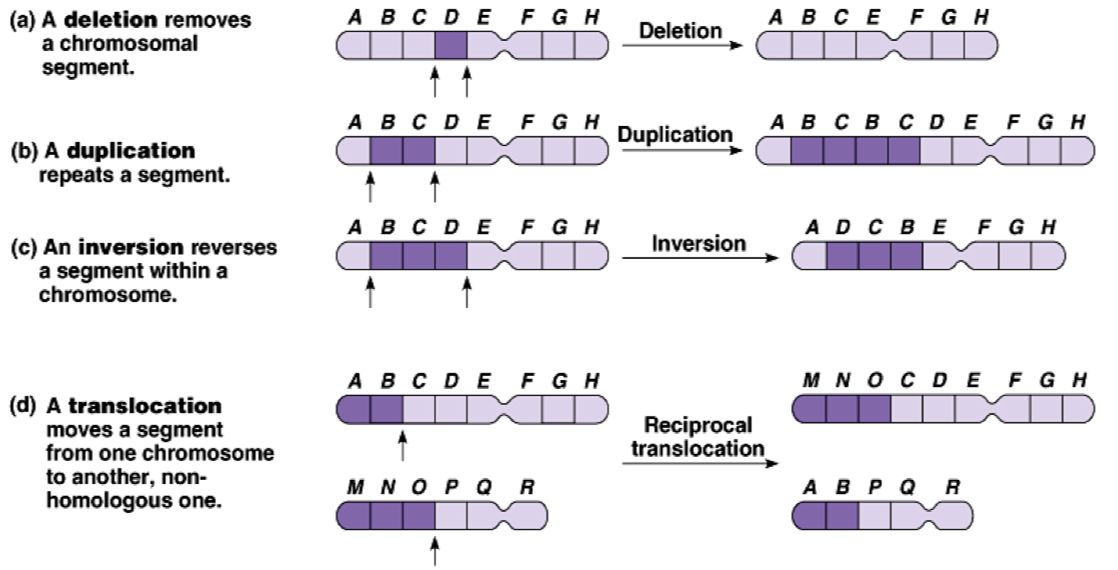
types of variation in chromosomal number? name some real-life examples.
1) aneuploidy → condition where cell has abnormal number of chromosomes. result of non-disjunction, failure of homologous chromosomes or sister chromatids to separate properly during nuclear division
eg Down syndrome. is the result of extra chromosome 21, so each body cell has tot of 47 chromosomes. includes characteristic facial features, heart defects, mental retardation.
2) polyploidy → condition where there are 3 or more times the haploid number of chromosomes (extra sets). result from non-disjunction of entire chromosomes sets in mitosis or meiosis. more common among plants than animals.
eg tetraploid animal, burrowing rodent, naturally occurring tetraploid species.
